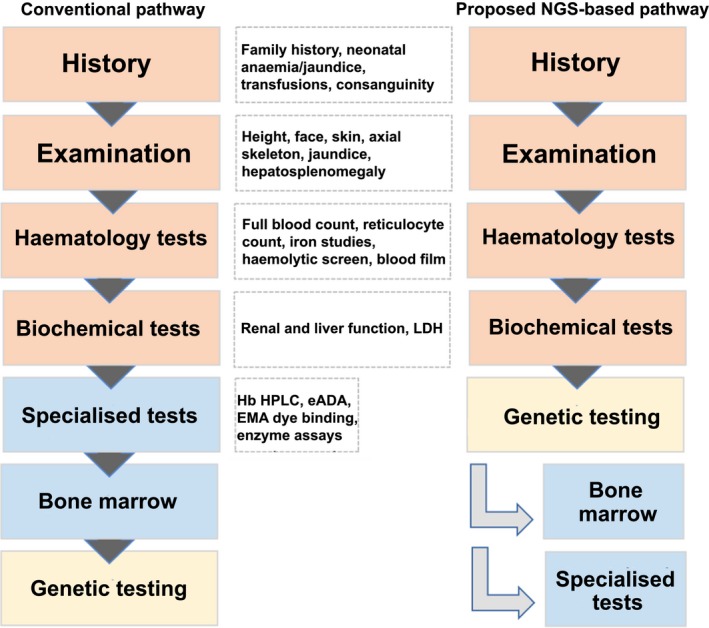Figure 1.

Comparison between the conventional pathway and an alternative NGS‐based pathway for the investigation of inherited anaemias. In the conventional pathway, patients are investigated sequentially where a differential diagnosis is devised based on history, examination and standard blood investigations. Specialised tests are then requested according to the suspected diagnosis and a bone marrow investigation frequently performed. Genetic testing is then reserved as a confirmatory test. In the alternative pathway, NGS is employed early, obviating the need for bone marrow biopsies in some patients where clear molecular diagnoses can be made by NGS. Where variants of uncertain significance are identified functional tests are required to confirm or refute the variant's pathogenicity. This alternative pathway can cut the time to diagnosis, remove the need for some bone marrow biopsies, provide accurate diagnosis of cases and allow genetic counselling. eADA, erythrocyte adenine deaminase; EMA, eosin‐5‐maleimide; Hb HPLC, haemoglobin high performance liquid chromatography; LDH, lactate dehydrogenase; NGS, next‐generation sequencing.
